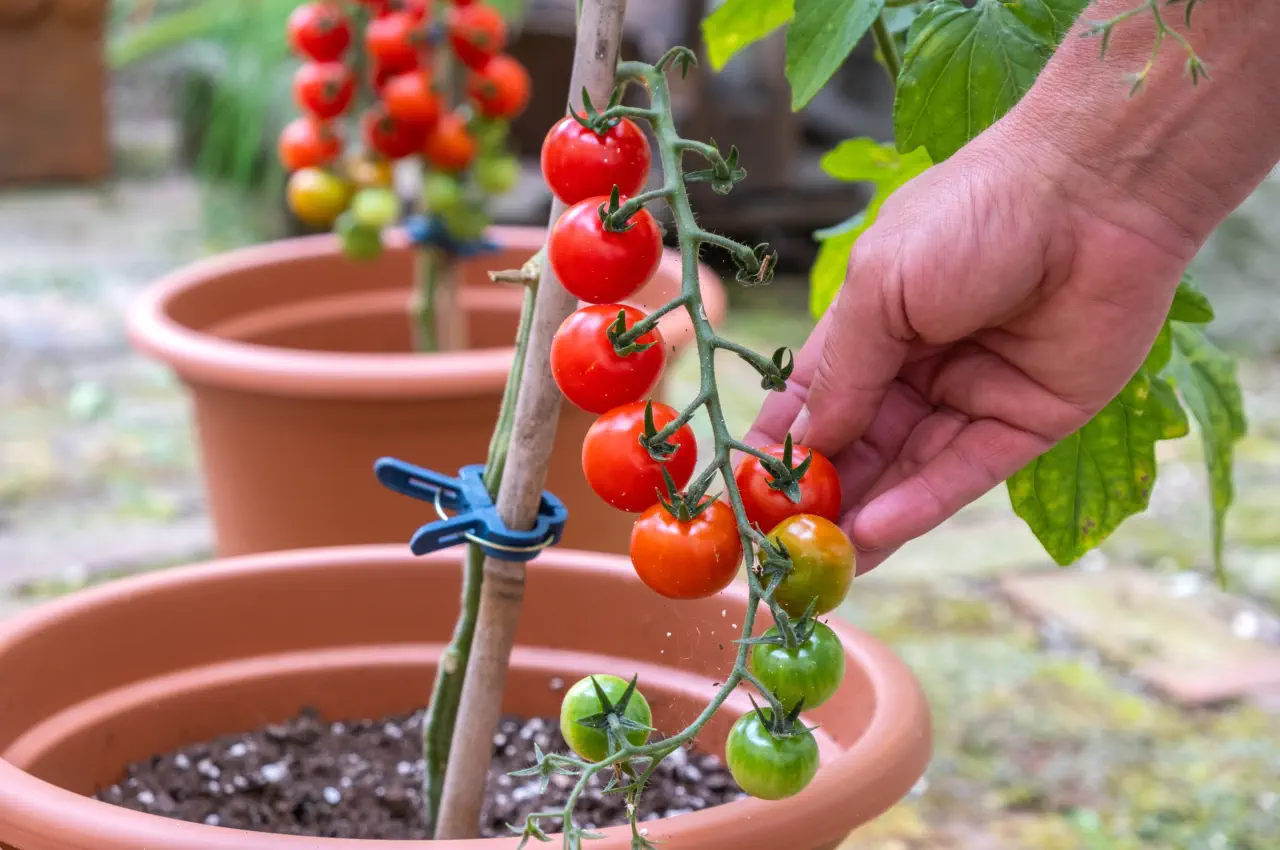Blight can wipe out your crop. Choosing the right blight resistant seed potatoes is crucial for a healthy harvest.
Read on to find out the top varieties of blight resistant seed potatoes that will save your yield....

When growing tomato plants indoors, as in a greenhouse or outdoors as on the patio or decking, for example, what is the best pot size? The optimum pot size is one that will allow the plant to grow to its full potential, whether that’s a cordon type or a bush type tomato. If the pot is too small then the plant’s growth could be restricted and the developing fruits are more likely to be smaller than usual.
However, if space is at a premium then you might have to consider the absolute minimum pot size, remembering also, to allow for spacing between plants, which can also impact on growth. Plants that are grown too close together will compete for light and become tall and leggy.
Whether you intend to grow your tomatoes indoors or outdoors, each plant will need a minimum pot size of 30cm. This applies to all types of tomatoes except dwarf varieties, which can be grown in pots as small as 15cm. Trailing types, which are often grown in hanging baskets will need a minimum basket diameter of 30cm.
Any shape of pot or container will do but ideally, it should have a depth of at least 25cm and contain at least 10 litres of soil. Some gardeners might have limited success with grow bags but generally tomato plants need to have ample soil depth in order to fully develop their root systems, especially if they are to produce an acceptable crop size of fruit.
There is no maximum size of pot or container for growing tomatoes but larger pots will be more expensive to buy and will need more compost. They will also need more space. At the other end of the spectrum, there are times when much smaller pots will do, providing you are able to give the plants everything they need.
This exception to the rule means providing your plants with ample nutrients and water on a regular basis. For example, you could get away with using 20cm pots if you are able to provide the plants with a balanced liquid feed at every watering. Tomatoes need nitrogen, phosphorus and potassium along with a few other trace mineral elements such as magnesium, boron, zinc and calcium.
Regular feeding and watering will discourage the plant’s root system from growing too large as the roots will not need to search for these vital elements. However, you need to also consider the plant’s height to pot size ratio. A small pot of compost will be quite light in comparison to the weight of a fruit-laden plant growing above the pot, making it very top heavy.
You will therefore need to offer additional support by way of staking or fixing plants to support wires. Using smaller pots is then probably best suited to greenhouse growing, where plants can be adequately supported and kept well away from gusts of wind. All things considered, a pot size of between 30cm and 40cm will suffice for all but dwarf tomato plant growing.